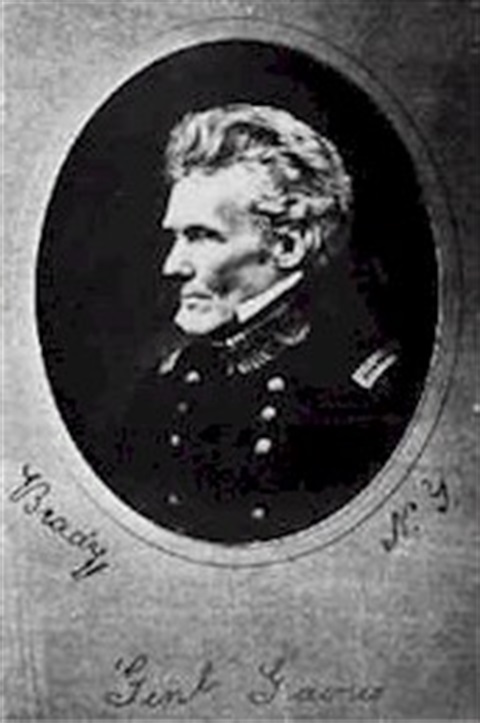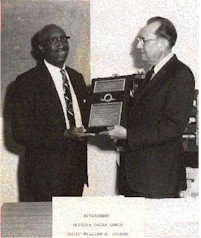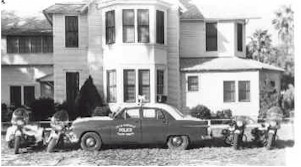Department History

The City of Gainesville received its name in September, 1853, when the County Commission provided a site for a new town and moved the county seat of Alachua County from what was once Newnansville. Gainesville was named in honor of General Edmund Pendleton Gaines who was the captor of Aaron Burr and who commanded the forces fighting against the Indians during the Second Seminole War.
By 1922, the Gainesville Police Department consisted of three members, the Chief included. In 1926, a set salary was implemented for the police chief and officers. Interim Chief Carl Stengel appointed a desk sergeant position which was maintained on a 24-hour basis in the chamber of the City Council.
In 1908, the Gainesville Police Department purchased its first police car, a Model T Ford. In 1928, the Model T was replaced with a Model A Ford. The Model A could transport the entire police force with extra passenger room.
In 1928, Chief Edward D. Vestel, a former Army captain, instituted the first uniform for the Gainesville Police Department. Chief Vestel also started the first filing system on all individuals arrested, a system that continues today. That same year, the department had its first motorcycle patrol officer, C.E. Strickland. In 1935, under Chief W.B. Cahoon, the Gainesville Police Department built its first radio transmitter. The department had grown to ten officers.
 In 1946, under Chief William D. Joiner, the Gainesville Police Department employed its first African-American police officer, Oscar Lewis.
In 1946, under Chief William D. Joiner, the Gainesville Police Department employed its first African-American police officer, Oscar Lewis.
The Gainesville Police Department had been headquartered in a few rooms in the basement of the old City Hall building until August 1953, when the department was moved into a new building at its present location of 721 NW 6th Street. Chief Joiners’ new "ultra modern" police building housed the police department, which had grown to a force of 40 officers, six patrol cars, four plain cars, and four motorcycles. Also located in the new building was the Municipal Court and the Jail, with five cells.
In 1957, a 24-hour, one man-patrol car system was initiated by Chief Joiner. In 1962, the police station was renovated, doubling its size.
In 1970, the Gainesville Police Department employed its first sworn policewoman, Elaine Garrett. Officer Garrett was hired as a detective. Five years later, in 1975, Fern Nix and Sylvia Sadlack (Hill) became the first female police uniform patrol officers.
Chief Joiner has the distinction of leading the Gainesville Police Department longer than any other Chief or Marshal. Chief Joiner served two separate terms as Chief, for a total of 27 years.
 In 1973, the Alachua County Adult Detention Center opens and assumes the jailing duties from the Gainesville Police Department and Alachua County Sheriff’s Office.
In 1973, the Alachua County Adult Detention Center opens and assumes the jailing duties from the Gainesville Police Department and Alachua County Sheriff’s Office.
In 1976, the Gainesville Police Department under Chief Nolen Freeman celebrated the US Bicentennial with a special GPD shoulder patch for their uniforms. This patch temporarily replaced the standard blue background with yellow lettering and trim and an orange State of Florida with a white background that consisted of red and blue trim and words “All-American City” on the patch. The department now consisted of 101 sworn patrol officers who answered 45,394 calls for service. The road officers were supported by the department’s 97 civilian staff members.
In 1980, Chief Atkins Warren became the first African-American Chief of the Gainesville Police Department. Chief Warren oversaw the construction of a new addition to the police station and an additional property storage building in 1983. The new police station was built as an expansion that increased the 19,000 square foot existing building to a 51,000 square foot building. It also utilized the site of the old Mayflower building, which was razed to make room for the addition. By 1983, the department consisted of 175 sworn patrol officers and answered 155,515 calls for service.
In 1985, Chief Wayland Clifton, Jr., initiated Community-Oriented Policing in the City of Gainesville. The COP program placed police substations in the high crime neighborhoods and combined the resources of the Police Department with those of other social service agencies to work one-on-one with the citizens of the neighborhood in an effort to rid the area of crime. Chief Clifton also combined the police and fire dispatch operations and relocated them in the Gainesville Police Department. This move decreased the response times of 911 emergency calls and other calls for service. Chief Clifton was recognized internationally as the 1993 recipient of the Webber Seavey Award for crime prevention techniques now being used throughout the United States.
In 1987, the Police Service Technician (PST) program was implemented as a three-year pilot program designed to assist patrol officers in the field. The PSTs worked minor traffic crashes, burglaries, forgeries, parking enforcement, school crossing guard duties, crime scene processing, and other essential police functions. This allowed patrol officers to be proactive in their zones and available for calls for service involving arrest or danger. The program fielded 19 members and was so successful that it was taken on as a full time program which continues today as an integral part of the department’s Patrol Division force.
In 1990, Alachua County and the City of Gainesville were rocked by the brutal serial murders of six college students. The murders occurred within and just outside the city limits during the short span of three days, August 26-28, at the beginning of the fall term at the University of Florida. The Student Homicide Task Force was created and assumed control of the GPD multipurpose room as offices and a command center for a period of approximately two years. The Task Force consisted of members of the Gainesville Police Department, the Alachua County Sheriff’s Office, the University of Florida Police Department, and the Florida Department of Law Enforcement who investigated the murder cases and followed up on leads which led to the final arrest and later conviction of the murderer. The national and international press exposure of the case prompted Chief Clifton to create the position of Public Information Officer, which was assumed by Lieutenant Sadie Darnell.
In 1991, while still investigating the student homicide cases, Gainesville suffered a serial arsonist who targeted three local churches within the city limits. A Church Arson Task Force was created that consisted of the Gainesville Police Department, the Gainesville Fire Department, the State of Florida Fire Marshall, and the Florida Department of Law Enforcement. The investigation led to the arrest and conviction of the suspect.
In 1994, the Gainesville Police Department acquired two surplus military OH-6 helicopters. One helicopter was refurbished for use with the other retained for replacement parts. Chief Clifton created the GPD Aviation Unit, and it began regular proactive aviation patrols while assisting in county-wide searches.
Under Chief Clifton, the Gainesville Police Department grew to over 240 sworn officers, with 120 patrol vehicles, 50 plain vehicles, four crime scene vehicles, 10 motorcycles, and one helicopter.
In 1996, Chief Donald Shinnamon replaced Chief Clifton. Chief Shinnamon responded to citizen complaints of open air drug markets in the city. He reorganized the Gainesville Police Department narcotics enforcement to a high profile crack down on “open air drug markets” targeting the street level dealers and their customers.
Also in 1996, the Gainesville Police Department and the Alachua County Sheriff’s Office combined their Aviation Units by creating the Joint Aviation Unit (JAU). This effort made the unit more cost efficient and mission effective. The JAU can field a full time pilot and Tactical Flight Officer and the capability for dual flight mission. The JAU share regular proactive aviation patrols and assists in searches countywide.
In 1998, Chief Shinnamon created the Gainesville Police Department Mounted Unit consisting of three trained police horses, a stable, an annex building and hitching post using forfeiture funds.
In 1999, Chief Norman Botsford replaced Chief Don Shinnamon as Chief of the Gainesville Police Department. In 2000, Chief Botsford reorganized the internal command structure and implemented a more intensive Community District Policing Program, changing the way the GPD officers now approach crime in the city. The Gainesville Police/Fire Rescue Dispatch Center was closed, and the dispatchers were absorbed into the newly created Alachua County Combined Communications Center located in a new building at the Alachua County Sheriff’s Office. This center now controls law enforcement and fire rescue dispatching for the entire county. The department changed over to the 800 megahertz radio system at the same time, which allows for the use of digital radios and mobile data terminals in the patrol vehicles.
The Patrol Division created the Advanced Law Enforcement Rifle Team (ALERT) in response to high profile violent incidents which occurred in high schools and other “active shooter” incidents around the country. Twenty-five selected patrol officers received additional tactical training in the use of their handgun, semi-automatic rifle, and shotgun, with live and “less lethal” rounds, for the handling of potential high risk or “active shooter” incidents within the city. The ALERT members are the first responders on critical violent incidents where SWAT mobilization is warranted but response time would potentially endanger additional citizens.
In 2001, the Crime Analysis Unit increased its capabilities into crime mapping and statistical analysis to identify problem areas within the city. This method currently aides patrol by developing a plan to correct the problem with community input. The CAU members have had extensive training in analyzing crime trends and have been awarded nationally for their efforts.
In 2002, annexation increased the city limits yet again and the coverage area of the Gainesville Police Department covers 110,000 citizens. The department answered 187,000 calls for service.
In 2004, the Gainesville Police Department implemented a new computerized records management system called PISTOL. This coincided with the issuing of mobile data terminals to each patrol officer, detective, and police service technician. PISTOL training gave the department members the ability to write electronic incident and traffic crash reports in the field, transmit them electronically for approval to their supervisor, and then submit the approved reports into the Record Management System (RMS) database.
The P2C “police-to-citizen” website was created shortly thereafter. It allows citizens the ability to access public records from the police RMS system and interact with the department. This website was created, as well as an internet presence on Facebook and YouTube.
Also in 2004, construction began on the new 5,800 square foot Reichert House building to house and train troubled youths from the community. These youths were identified by the court, family or department officers as needing an alternative to the direction their current lifestyle would lead them. The Gainesville Police Department Public Information Office created a television and radio show called Police Beat. The show provides citizens of Gainesville with information on what GPD is doing in their community and highlights specialty unit interactions within the department. A Citizen’s Academy was created which allows citizens to participate in a certified course that exposes them to their police department, including the ability to ride along with an officer.
The 2004 hurricane season targeted Gainesville with each of the three major hurricanes that hit Florida (Charlie, Frances, Jeanne) tracking partially or directly over Gainesville causing power outages and down trees. The police department mobilized chain saw brigades which cleared the roadways to allow road access for the numerous calls for service. This also enabled the Gainesville Regional Utilities line crews and clean-up crews to follow.
As a result of the district community police efforts, the calls for service for 2004 was reduced to 136,470.
In 2006, the empty Voyles Appliances/Walker Furniture building at 413 NW 8th Avenue was purchased and renovated into the Gainesville Police Department Administration building. This was part of the first phase of a building renovation for the 721 NW 6th Street building. The Chief’s Office, Personnel Section, Records Section, Information Technology Section, Court Liaison, front desk, and Community Services Section were temporarily transferred into the administration building.
In 2009, Chief Tony Jones replaced Chief Botsford. After a GPD K-9 bit a juvenile while fleeing from officers responding to a burglary in progress, a group of citizens from the community voiced concerns over the police department’s perceived treatment and interactions with members of African-Americans and some of the related internal GPD policies. Chief Jones invited an open investigation of the department by the National Organization of Black Law Enforcement Executives (NOBLE). They collected input from the citizenry on the long-term goals and changes they felt the police department needed to make to improve its interactions with the community and community oriented policing efforts.
The positive results of the NOBLE review along with self-initiated changes made by Chief Jones improved the relationship of the police department and the citizens of Gainesville.
In 2010, after lengthy planning to renovate the 721 NW 6th Street police building, the decision was made to move the remaining department members out of the 721 building. They were moved into temporary locations scattered around the City of Gainesville while the building renovations were made. Preparatory gutting of the building interior began. It was determined that during one or more of the five different additions/renovations put onto the original building since its construction in 1952, the structural integrity of the oldest south side portion of the building was compromised. This made continuing the planned renovation impossible without excessive expense. After a year of rethinking the problem, the decision was made to demolish the old building and build a new modern police headquarters. The eagerly anticipated demolition of the old building and the building of the new department structure (relocated to the southwest corner of the intersection of NW 6th Street and NW 8th Avenue—adjacent to the current administration building) began in late 2012 and was completed in April, 2014.